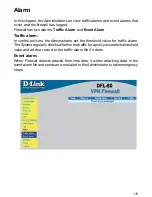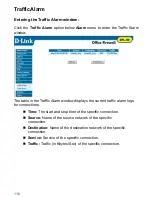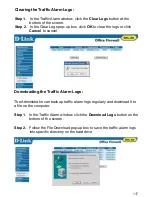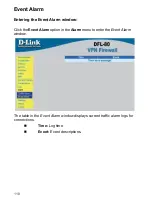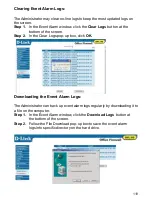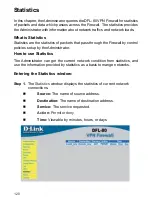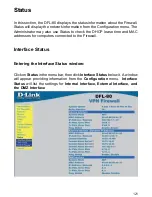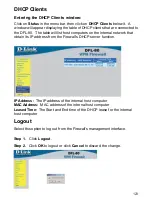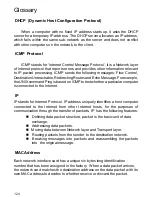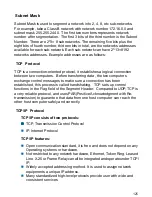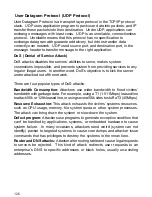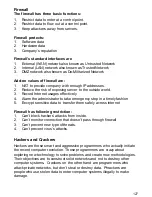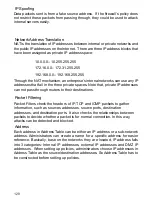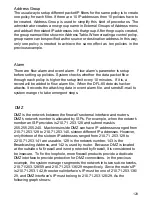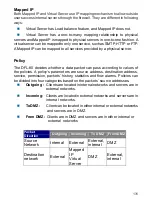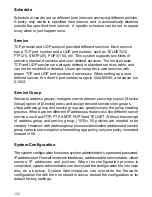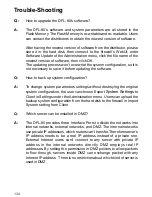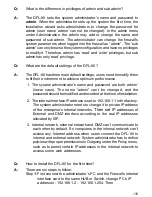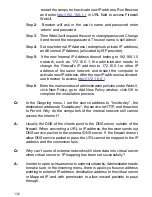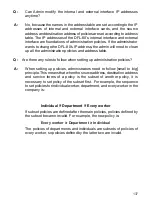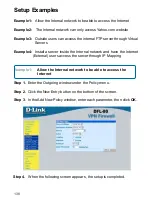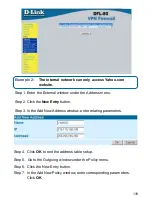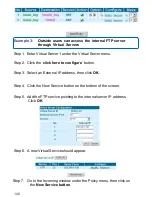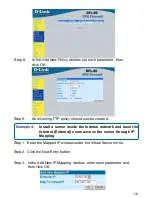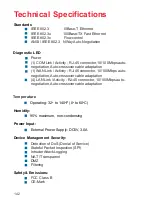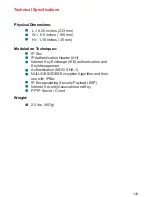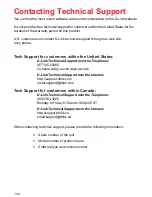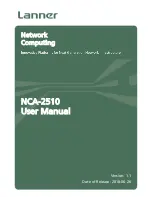
129
Address Group
The usual way to setup different packet IP filters for the same policy is to create
one policy for each filter. If there are 10 IP addresses then 10 policies have to
be created. Address Group is used to simplify this kind of procedures. The
administrator creates a new group name in External Groups of Address menu
and adds all the related IP addresses into that group. After the group is created,
the group name will be shown in Address Table. When creating a control policy,
group name can be specified as the source or destination address. In this way,
only one policy is needed to achieve the same effect as ten policies in the
previous example.
Alarm
There are flow alarm and event alarm. Flow alarm’s parameter is setup
before setting up policies. System checks whether the data packet flow
through each policy is higher the setup limit every 10 minutes. If it is, a
record will be added to flow alarm file. When the DFL-80 detects hacker
attacks, it records the attacking data in event alarm file, and sends E-mail to
system manger to take emergent steps.
DMZ
DMZ is the network between the firewall’s external interface and routers.
DMZ’s network number is allocated by ISPs. For example, when the network
number an ISP provides is 210.71.253.128 and subnet mask is
255.255.255.240. Machines inside DMZ can have IP addresses ranged from
210.71.253.128 to 210.71.253.140, sixteen different IP addresses. However,
only thirteen of the sixteen IP addresses ranged from 210.71.253.129 to
2210.71.253.141 are useable. 128 is the network number, 143 is the
Broadcasting Address, and 142 is used by router. Because DMZ is located
at the outside of a firewall and is not protected by firewall, it is considered to
be insecure. To fix the loophole, more firewall products provide a dedicate
DMZ interface to provide protection for DMZ connections. In the previous
example, the system manager segments the network into two sub-networks,
210.71/253.128/59 and 210.71.253.136/29 respectively. Since the route’s IP
is 210.71.253.142, the external interface’s IP must be one of 210.71.253.136/
29, and DMZ interface’s IP must belong to 210.71.253.128/29. As the
following graph shows:

